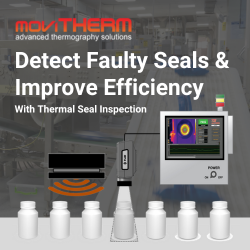Real time measurement helps dairies cut product loss as 2025 sustainability targets loom
Collo dielectric sensors identify the unique fingerprint of each liquid as it moves through the pipeline, enabling operators to optimize their dairy plant and reduce product waste
Pipeline contents are commonly measured by one of the three technologies - flow meter, turbidity sensor or conductivity sensor. Flow meters estimate the arrival of the product at the push-out point based on the system flow rate; turbidity sensors monitor the interaction between a light beam and the liquid; and conductivity sensors operate by measuring the electrical conductivity of the liquid.
A fourth method is based on monitoring the dielectricity of the liquid, i.e. its ability to hold electric charge. This is achieved by using a sensor that accurately identifies the substance moving through the pipeline as a radiofrequency electromagnetic field is induced into the liquid. Different liquids have different dielectricity, making them distinguishable from each other, giving each liquid a unique fingerprint.
"Measuring the dielectric properties of the liquid provides significant advantages over traditional approaches. Flow meters have very low accuracy and turbidity sensors cannot distinguish transparent liquids, such as whey concentrate, from water, and become clogged by thick liquids, like cream. The electrical conductivity of milk-based products is close to that of water, which translates into low sensitivity for conductivity sensors when detecting product interfaces," says Matti Järveläinen, CEO of Collo, a leading manufacturer of dielectric liquid analyzing systems.
Large dairy and other food producers are currently increasing their efforts to reduce their environmental impact ahead of environmental targets that loom in the near future, mainly in 2025 and 2030. Most of the greenhouse gas emissions caused by dairy operations originate at the farm. For instance, Nestlé, in its sustainability report[1], outlines how just 5% of its greenhouse gas emissions comes from its own operations, whereas 95% is made up of emissions in the supply chain. Raw milk production is the largest single source of emissions in dairy production, which any waste of milk-based raw material needs to be prevented and, preferably, eliminated.
Other companies have similar targets. Danone is committed to reducing its own greenhouse gas emissions by 47.2% by 2030 and those in the supply chain by 42%. Fonterra aims to reduce manufacturing emissions by 50% by 2030.
The year 2025 is an important milestone for many companies, as the 2030 Agenda for Sustainable Development was adopted by all United Nations members in 2015 and many companies set themselves 10-year targets at the time. The European Union is committed to implementing the UN Sustainable Development Goals and the CSR Directive is one way the business community is made to play its part.
In addition to the regulatory requirements, changing consumer preferences is another powerful incentive for dairy producers to implement more eco-friendly production methods. A study by McKinsey and NielsenIQ found that products making claims related to sustainability have faster market growth - over a 5-year time span, such products grew about 18 percent more than the expectation was at the beginning of the period.
- Waste in dairy processes needs to be reduced. Environmentally compatible processes are demanded by regulators and consumers alike. Wasting hundreds of liters of valuable product in every batch makes no sense when this can be prevented with the right technology. But it does not end there. With Collo's versatile technology we can help plants reduce water use too, an area which is also of keen interest for our customers and regulators alike. Working together with its customers, Collo can play a significant role in achieving a more sustainable dairy process, concludes Järveläinen.
Featured Product

